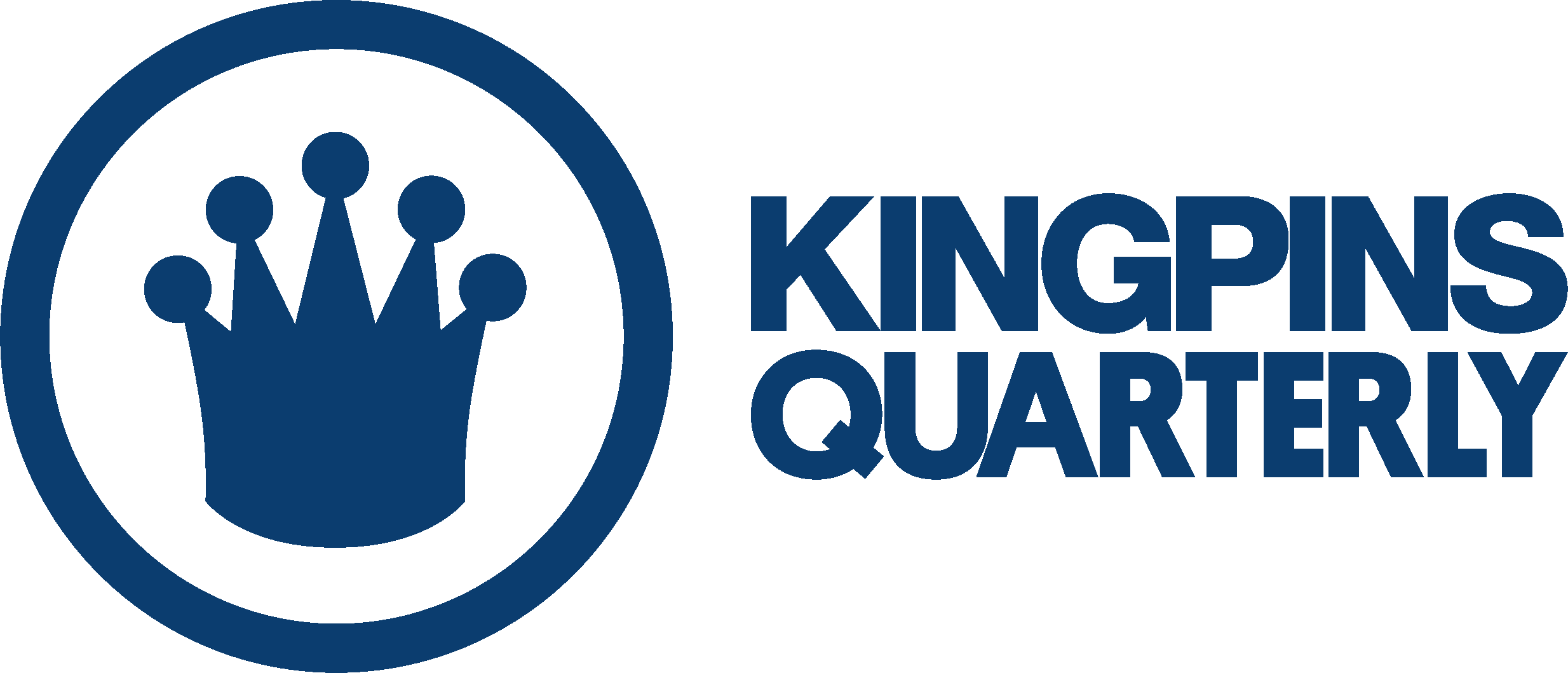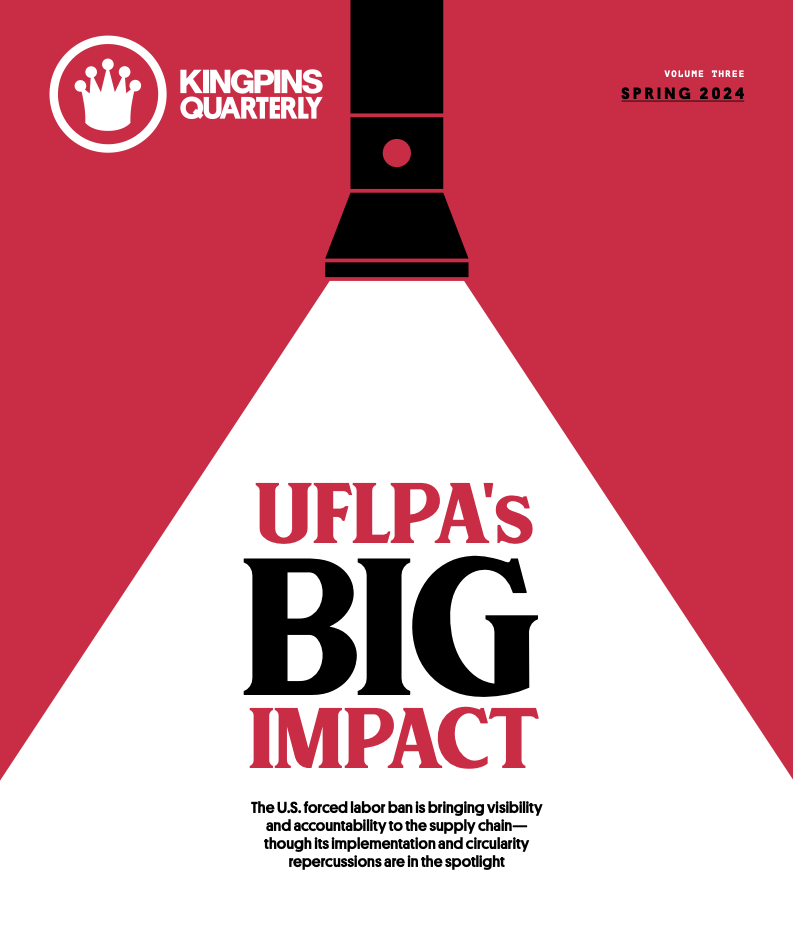The Uyghur Forced Labor Prevention Act has had a profound impact on U.S. brands, retailers and sourcing partners, especially in the denim segment. The law, which prohibits goods originating wholly or in part from China’s Xinjiang Uyghur Autonomous Region (XUAR) from entering the U.S., places the burden of proof on importers— a fact that’s proven costly and onerous for this traditionally opaque industry. In response, brands and retailers continue to upend supply chains, standup new technology and shore up reporting. Meanwhile, calls for tighter controls at home and additional legislation in the European Union are raising questions around UFLPA’s enforcement and effectiveness.
“There is a degree of fear in the brand community, translated into sourcing trying very hard to avoid Xinjiang,” said Robert Antoshak, partner and consultant with the Gherzi Textile Organization. “But it’s like trying to stop water going through a screen door.”
From June 2022 through January 2024, the CBP scrutinized 1,275 shipments of suspect apparel, footwear, and textile goods with a total value of $51.13 million. Of that number, 333 shipments were released; 694 shipments were denied; and 248 shipments are pending.
“Our members make every effort to identify, prevent, and eradicate slave labor,” said Nate Herman, senior VP/policy for the American Apparel & Footwear Association (AAFA). “They are working hard to identify the source of their cotton.”
That’s a tall order given the length and complexity of most supply chains and the fact that cotton fibers can end up comingled at several points in their textile journey.
Adding up the costs
“The UFLPA is unique and it kind of shocked the industry because you need to prove yourself of being innocent,” said Pauline God, policy and partnership manager for traceability software provider TrusTrace. “The necessary documents then for conducting this analysis includes everything from payment records, shipping records, production records, all kinds of information.”
For those who have had goods detained, it doesn’t take long for costs to mount.
Herman explains that while CBP allows importers only 30 days to petition for release when they believe CBP is incorrectly detaining a shipment having no connection with XUAR, the agency can take up to twelve weeks to reach a decision.
“For seasonal products such as apparel, this is a big problem,” he said. Storage fees for containers awaiting CBP’s decision can also add up. Both reasons can prompt importers to re-export their goods to another country—or even abandon their shipment.
“The CBP is overwhelmed with the hundreds of documents they require importers to file as part of their petition,” Herman said. “CBP is looking for documentation that goes all the way back to the cotton bale. Many companies can’t get past the yarn spinner.”
While brands and retailers are frustrated with the UFLPA requirements, the U.S. textile industry thinks it does not go far enough. The National Council of Textile Organizations (NCTO), along with members of Congress, are calling for tougher enforcement. In January, the U.S. House of Representatives Select Committee on the Chinese Communist Party (CCP) sent a letter to Homeland Security Secretary Mayorkas, urging expansion of UFLPA’s Entity List of Chinese companies suspected of dealing in forced labor products.
The letter from the Select Committee also addressed the de minimis provision, which allows importation of goods less than $800 direct to consumers, without tax or duty. The loophole has facilitated the growth of Chinese fast-fashion online retailers such as Shein and Temu, allowing them to dodge UFLPA compliance.
But these calls for stricter enforcement have come at a time when CBP’s actions have already signaled that the agency is stepping up its efforts, said Ethan Woolley, account executive at risk analytics provider Kharon during a webinar the company hosted in October.
“The UFLPA entity list, as first conceived 15-16 months ago, contained companies that were either taken from being on the BIS Entity List, because of their complicity in human rights violations in Xinjiang, or already were companies with WROs being enforced against them by CBP. These companies that have been added more recently aren’t coming from those existing government lists,” he said, adding he expects to see the entity list continue to expand per the Forced Labor Enforcement Task Force’s mandate. Woolley also pointed to a “significant increase in CBP funding” for the enforcement of UFLPA as cues to CBP’s ramp up.
Making traceability a priority
Increased scrutiny means the industry will need to be even more vigilant.
“Physical forensic testing is important. You can’t rely solely on digital tracking or documentation,” said MeiLin Wan, VP Textile Sales for Applied DNA Sciences, Inc. Applied DNA combines multiple technologies in its CertainT Supply Chain program: tagging raw materials with molecular DNA, testing for identity throughout the supply chain, and tracking the chain of custody.
“The CBP may not necessarily utilize all the tech that’s available,” said Wan, who attended last year’s Forced Labor Technical Expo, where CBP introduced a select group of service providers to assist importers with their rebuttal documentation. “They prefer to track documents digitally. If they are using specific tech and tools, they should disclose them to the industry.”
The Department of Homeland Security and CBP recognize Oritain, which uses isotopic testing to create identifiable fingerprints for products that are traceable through the supply chain to their origin.
CBP also contracted with Kharon, giving CBP access to Kharon’s global risk analytics platform. However, China has since sanctioned the company and frozen its assets, though the company calls this “symbolic” given it has “no presence in China.”
Legitimate off-shore suppliers of denim textiles and apparel are using a number of tagging and tracing technologies to certify their yarns and fibers.
Triarchy, a high-end responsible denim label from Los Angeles, uses certified organic cotton, as well as recycled and regenerative cotton fibers, and Candiani’s plastic-free stretch denim. Third-party auditor Renoon supplies transparency to the brand via embedded QR codes.
The Renoon platform maps and verifies the supply chain via blockchain from raw material sources. According to co-founder/creative director Adam Taubenfligel, Triarchy does not use fibers that would run afoul of UFLPA.
Kipaş, a vertically integrated textile company in Turkey, spins its own yarn with fibers of regenerative Good Earth Cotton, grown in Australia and certified via FibreTrace. The technology embeds non-toxic, luminescent pigments into the fibers, which are scanned and read with a hand-held device.
“The benefit of initiatives such as the UFLPA and the initiatives that are going on in Europe are that they put the pressure on for brands to move faster than they may otherwise have done in terms of investing in these traceability initiatives and platforms,” Parker said.
“Traceability is a good thing,” the AAFA’s Herman said. “Visibility assists sustainability goals, such as reduction of CO2e and harmful chemicals.”
“Traceability systems are working, but how do we make them more accessible to farmers, merchants, and brokers?” asked LaRhea Pepper, co-founder and former CEO of Textile Exchange. “It’s going to require a dynamic shift in the industry. You can legislate, but that doesn’t make it so. It must be an industry solution.”
Shannon Mercer, CEO of FibreTrace, agrees, stating the industry needs to take a lesson ahead of broader pending environmental and social regulations, which will call for more of the same. “Achieving compliance requires a combined effort and a united goal across diverse stakeholders. It also necessitates robust enforcement mechanisms, transparency measures, and capacity-building initiatives to address systemic issues effectively.”
Mercer hopes that lawmakers have learned from their experience with UFLPA. Overall, he said, there’s a “rising need for clear standards and guidance, the importance of enforcement and accountability, and the need to invest in technologies that will assist.”
Measuring the success of the UFLPA
While UFLPA will likely have many net benefits for the industry, its impact on forced labor specifically is hard to pinpoint. Imports from China declined in 2023, still it is difficult to know if anything has changed for the Uyghurs.
According to the South China Morning Post, China’s exports of all commodities to the U.S. fell by 13.1 percent in 2023 from the previous year, the steepest decline in almost three decades. China is also losing its position as the top exporter to the U.S. for the first time in 17 years. However, the decline is likely the result of the hefty tariffs in effect.
“The CBP is making every effort to be effective, but the Chinese programs are continuing,” said Pepper.
Cotton and other products from XUAR continue to be transshipped to U.S. supply chain heavyweights such as Vietnam, Bangladesh, and Sri Lanka. The CBP dashboard shows that out of the 402 shipments from Vietnam to the U.S., only 115 were released.
There are reports that cotton fibers and yarns from Xinjiang with counterfeit documentation are finding their way into Central America and Mexico. China is also sending an increasing amount of forced labor apparel to the EU, according to the Guardian newspaper in Britain.
Additionally, China runs state-sponsored labor transfer programs to circumvent the UFLPA. Uyghur workers are transferred against their will out of XUAR to factories and farms in other regions. Although these goods do not originate in XUAR, they are made with forced labor.
These efforts to circumvent the law demonstrate the difficulty of eradicating forced labor through trade regulations, but John M. Foote, partner at law firm Kelley Drye, said that’s not the right metric to use when evaluating UFLPA. “I think the way to think about trade law, like the UFLPA, like section 307, is, is it incentivizing the kind of activity that you want it to incentivize? And I think what you want it to incentivize is mapping of the supply chain, tracing of the supply chain, and the assessment of the exposure to forced labor within the supply chain, specifically for those goods that are coming across the border into the U.S. market,” he said. “In that regard, I do think the law is a success.”
To reduce exposure, U.S. brands are reassessing their sourcing scenarios, but those we contacted declined to comment.
“Brands are making a definite move away from Xinjiang’s lovely long-staple cotton,” said Pepper, who now works as a brand consultant. “They are looking for new sources of Pima in South America and Mexico, and at different varieties of longer- staple cotton in Turkey and India.”
Addressing what this means for recycled cotton
Any successes associated with UFLPA could come at the expense of another major denim initiative.
Inspired by the Ellen MacArthur Foundation’s Jeans Redesign project, denim brands and suppliers are focusing on circular economy principles, including the use of recycled cotton. But the UFLPA has put a freeze on imports containing recycled fibers from textile waste, because it is impossible to prove their provenance.
“I have not done much denim business for the U.S. since they started enforcing the UFLPA. Buyers don’t want to take chances,” said Cyclo Recycled Fibers CEO Mustafain Munir. The company mechanically recycles cotton-based textiles from pre-consumer cutting waste. The resulting fibers are spun into yarn by Simco Spinning & Textile Limited and embedded with tracer particles from the Aware Integrity Solution, which enables traceability from yarn to finished product.
However, the nature of “waste management” means the origin of the original textiles is difficult to certify. “I can provide the documentation for the yarn, but how can you prove where the batch [of cutting waste] is coming from?” asked Munir. He prefers to source the cutting waste from vertical operations.
Europe has become Cyclo’s biggest market. “The EU already has a mandate for recycled cotton. They have a more comprehensive view of sustainability beyond forced labor.”
At Kipaş’ denim operations, “We mostly recycle the pre-consumer wastes of our own production,” explained Mustafa Güleken, general manager. “We have our own recycling and shredding unit in Kipaş Textiles, which has 30 tons per day capacity for 100 percent cotton waste.”
For companies that are not vertical in this way, Cyclo’s situation illustrates the unintended consequences of regulation.
“There are already many hurdles when it comes to scaling innovation [including] price, performance, and quantifying the environmental impact. If you layer on top of that the barriers that come with customs and specific regulations, it can make it harder for innovations like textile to textile recycling to scale. That is why it’s important that these customs and regulations are nuanced, taking into account these innovations,” said Georgia Parker, innovation director for Fashion for Good.
To address this latest barrier by the UFLPA, the organization, which helps scale innovation across the apparel supply chain, is working on several projects designed to leverage traceability to ensure companies have compliant feedstock. The organization’s Tracing Textile Waste project, which will launch soon, is an open data standard to provide a central place for collecting and sharing information about where textile waste comes from so it can be used in the GRS standard.
Fashion for Good is also lobbying the EU for clarity around the language used in the regulations, specifically, what’s considered in and out of scope. For instance, currently fibers, yarn and pulp are not classified as waste, while monomers and polymers often are, which impacts recycling efforts and what can and can’t be imported.
Looking ahead for forced labor regulations
ESG commitments and the moral imperative are inspiring other countries to consider banning forced labor imports.
The EU has proposed a forced labor ban, placing burden of proof on companies importing from problem areas; and hopes to pass the legislation before EU elections in early June. However, the EU will need to consider the potential impact on the use of recycled products already mandated by the European Green Deal.
Canada’s recent legislation requires businesses to annually report their efforts to ban forced labor from their supply chains. Mexico is aligning with its North American neighbors, although with weaker rules of enforcement. In Japan, many businesses have voluntarily adopted the government’s guidelines regarding due diligence in human rights, including forced labor.
In effect for less than two years, the UFLPA is still in transition. “In the long run the UFLPA is a good thing,” said Herman. “The problem is with its implementation.”
Foote said the implementation, which he characterizes as “a byzantine mess of unpredictable action” is a direct result of the age and brevity of the forced labor import ban, which falls under a decades-old law. “[The Tariff Act] was written in 1929. The forced labor import ban is a total of 54 words. You cannot pass a statute that has 54 words that makes it illegal to do a single act, and then just sort of trust all the rest of the decision making, especially when it’s so complicated,” he said. “What do you have to prove? What are you going to focus on? Who’s going to make those decisions? According to what standards? All of that is extremely ambiguous and unspecified.”




